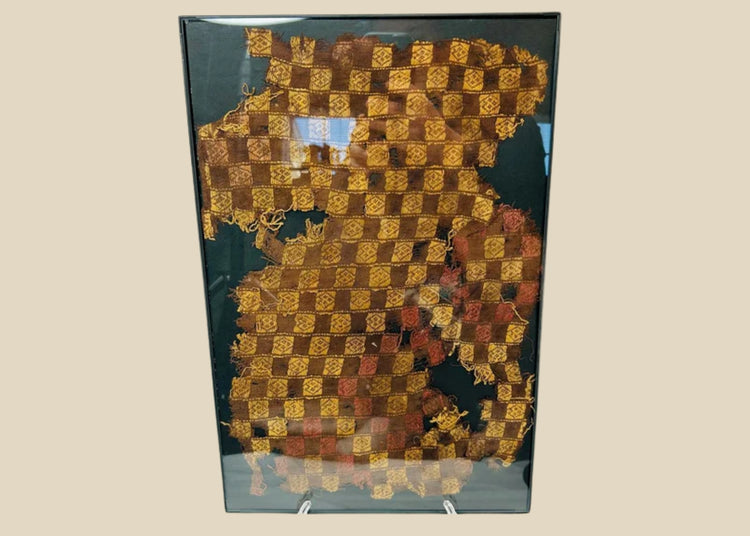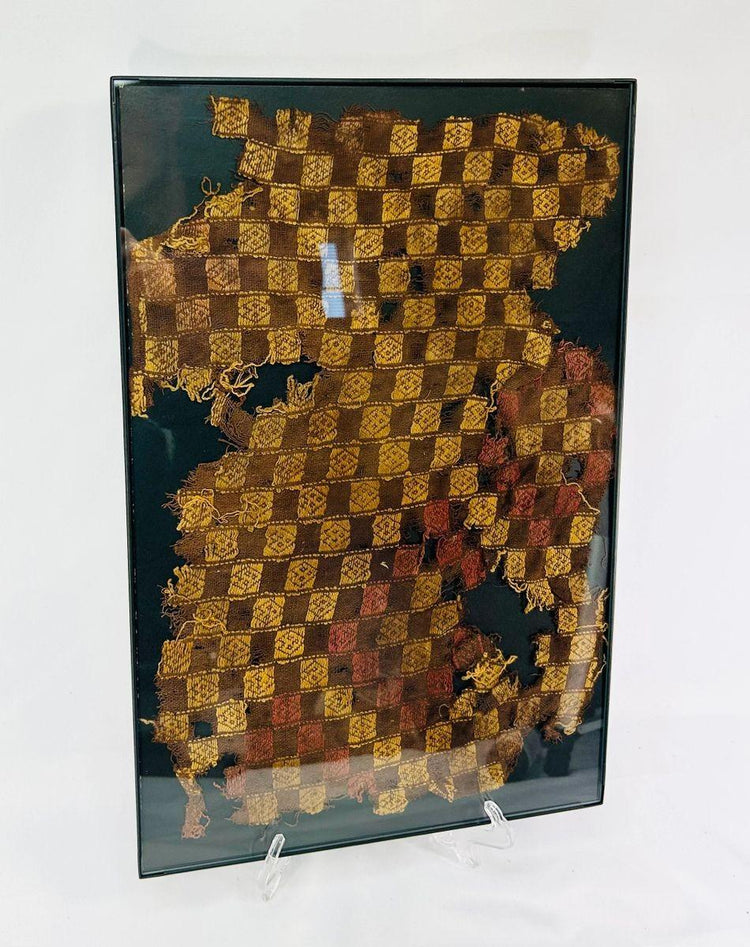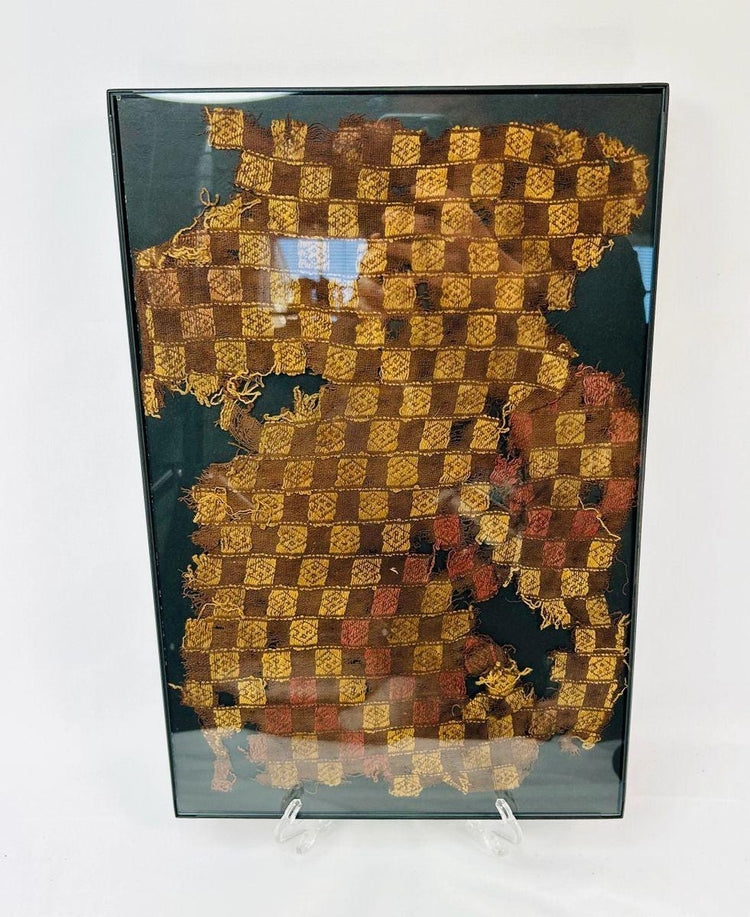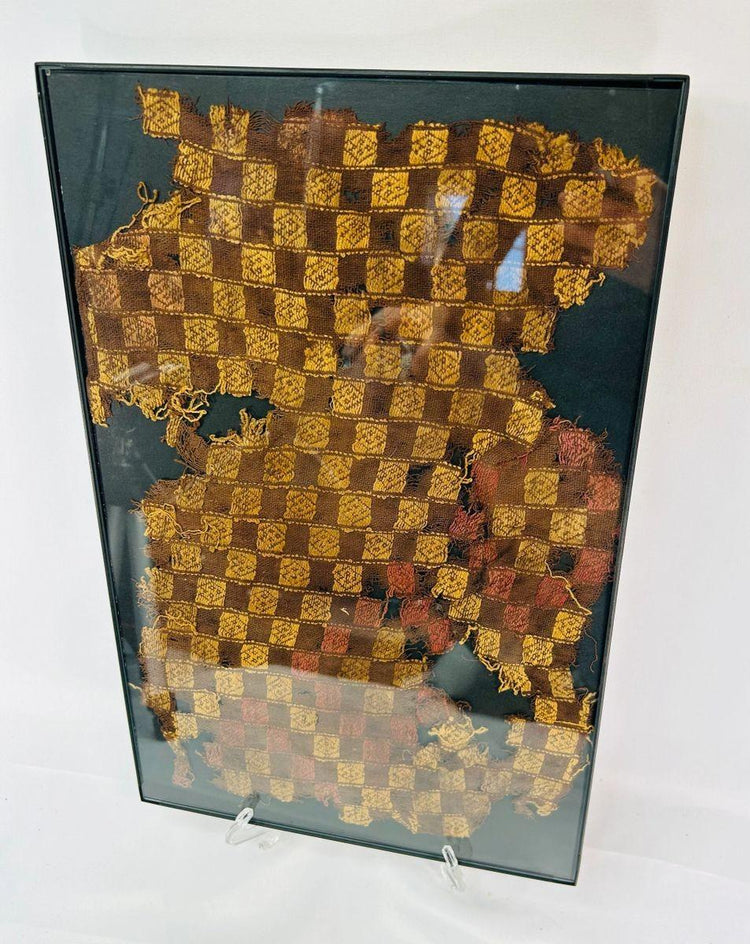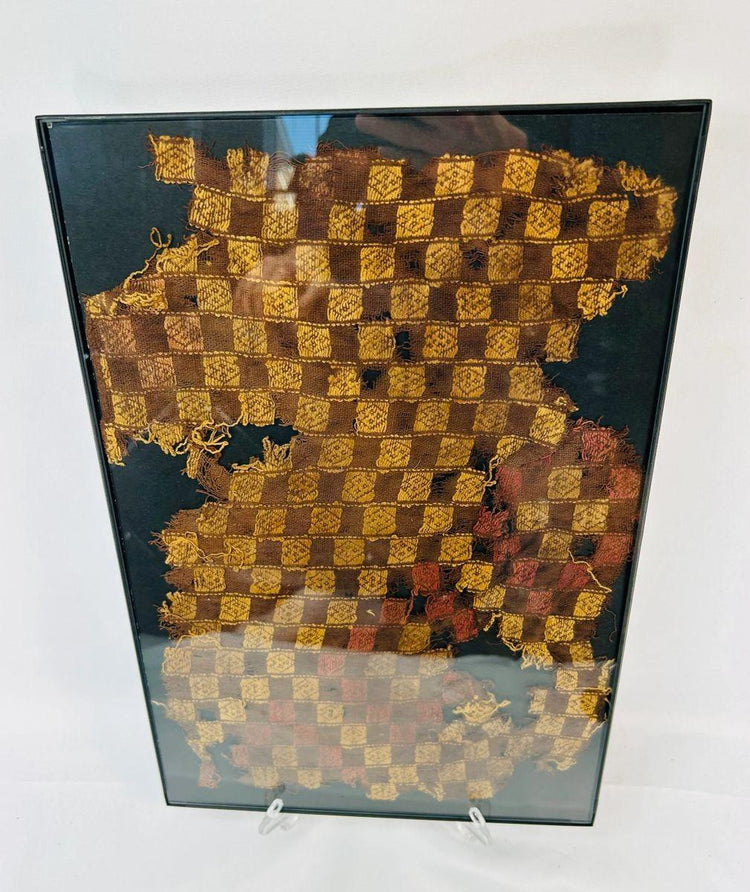Chancay Textile Fragment | Checkerboard Cotton Weaving with Natural Dyes | Coastal Peru | 1000–1470 CE
Description
More
Less
Historical Context & Origin
Region: Coastal Peru
Material: Finely woven cotton fibers with natural dyes
Period: Late Intermediate Period (1000–1470 CE)
Description
This extraordinary textile fragment reflects the artistry of the Chancay culture, renowned for their intricate weaving and symbolic motifs. Featuring a bold checkered pattern in vibrant yellow, brown, and subtle red, the piece demonstrates both advanced weaving techniques and the ritual symbolism central to Chancay textiles. The checkerboard design—common across Andean civilizations—evoked balance, duality, and cosmic harmony, underscoring the textile’s ceremonial importance. Likely used in funerary or ritual contexts, it may once have adorned a larger garment, sash, or tapestry.
Features
- Checkerboard motif with vibrant natural pigments
- Symbolic design representing harmony, balance, and duality
- Finely woven cotton with precise geometric patterning
- Bold color palette achieved through plant- and mineral-based dyes
- Fragment possibly originating from ceremonial or funerary textiles
Cultural Significance
The Chancay civilization flourished on Peru’s central coast, producing some of the most distinctive textiles of pre-Columbian South America. Their weaving incorporated cosmological and ritual symbolism, with motifs that reflected beliefs in order, spirituality, and ancestral continuity. Textiles were not merely decorative but sacred objects used in burials and ceremonies, symbolizing identity, protection, and a connection to the divine. This fragment also reflects possible exchanges with neighboring cultures such as the Mochica or Lambayeque, who were equally skilled in textile traditions.
Condition
The fragment remains remarkably well-preserved despite its age. Its geometric pattern and vivid coloration are still clearly visible, though some fraying and losses are evident around the edges. These signs of wear are consistent with its antiquity and enhance its authenticity as a ceremonial textile fragment. Overall, it remains structurally sound, offering scholars and collectors a significant piece of Chancay cultural history.
Dimensions (approximate)
Height: 11 in
Width: 17 in
Age
Over 500 years old
Learn More
Explore the Art & Ritual Traditions of the Chancay People
Discover the Large Chancay Figural Effigy Urn in Our Collection
Description
Historical Context & Origin
Region: Coastal Peru
Material: Finely woven cotton fibers with natural dyes
Period: Late Intermediate Period (1000–1470 CE)
Description
This extraordinary textile fragment reflects the artistry of the Chancay culture, renowned for their intricate weaving and symbolic motifs. Featuring a bold checkered pattern in vibrant yellow, brown, and subtle red, the piece demonstrates both advanced weaving techniques and the ritual symbolism central to Chancay textiles. The checkerboard design—common across Andean civilizations—evoked balance, duality, and cosmic harmony, underscoring the textile’s ceremonial importance. Likely used in funerary or ritual contexts, it may once have adorned a larger garment, sash, or tapestry.
Features
- Checkerboard motif with vibrant natural pigments
- Symbolic design representing harmony, balance, and duality
- Finely woven cotton with precise geometric patterning
- Bold color palette achieved through plant- and mineral-based dyes
- Fragment possibly originating from ceremonial or funerary textiles
Cultural Significance
The Chancay civilization flourished on Peru’s central coast, producing some of the most distinctive textiles of pre-Columbian South America. Their weaving incorporated cosmological and ritual symbolism, with motifs that reflected beliefs in order, spirituality, and ancestral continuity. Textiles were not merely decorative but sacred objects used in burials and ceremonies, symbolizing identity, protection, and a connection to the divine. This fragment also reflects possible exchanges with neighboring cultures such as the Mochica or Lambayeque, who were equally skilled in textile traditions.
Condition
The fragment remains remarkably well-preserved despite its age. Its geometric pattern and vivid coloration are still clearly visible, though some fraying and losses are evident around the edges. These signs of wear are consistent with its antiquity and enhance its authenticity as a ceremonial textile fragment. Overall, it remains structurally sound, offering scholars and collectors a significant piece of Chancay cultural history.
Dimensions (approximate)
Height: 11 in
Width: 17 in
Age
Over 500 years old
Learn More
Explore the Art & Ritual Traditions of the Chancay People
Discover the Large Chancay Figural Effigy Urn in Our Collection
You May Also Like














